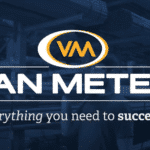Editor’s Note: This is the first installment in our “Executive Input” blog series sponsored by DataXstream that extracts key takeaways from short interviews with distribution executives — often answering three straightforward questions about challenges they are trying to solve with technology. These leaders could opt to have their name and company omitted from the blog to speak freely. Keep an eye out for more to come.
———————
Whatever the latest daily chatter may be around artificial intelligence, the distribution industry is cutting through the noise and moving to embrace AI. But distributors’ levels of enthusiasm do vary and in ways that conveniently borrow the well-worn acronym: Some might self-identify as Almost Indifferent while others claim they’re All In. In truth, those that are poised for early and committed adoption — meaning they have sufficient resources for the pursuit — fall into the category of Actively Investigating.
Take, for example, an Illinois-based billion-dollar redistributor and member of the National Association of Wholesaler-Distributors. The company CIO, who spoke to MDM on background, reports its executive team has been brainstorming AI applications for about four years, and optimum utilization is the frequent subject of his regular presentations to the company’s board. What began as a data analytics group in 2020 has evolved into an AI-centric steering committee seeking to identify where different parts of the business can derive greatest value.
“Yes, we are using AI in a number of different ways, and we have many conversations across the company,” he told MDM. “We have probably 30 different concepts that we’ve prioritized since we started to work on this in earnest. At present, we have four areas that are actively in use today: (1) how we manage and improve our product data, (2) predicting labor turnover from an HR perspective, both in the warehouse and with drivers, (3) sales applications, and (4) supply chain planning.
“Now we’re trying to more strategically prioritize where we should apply it next to get the best benefit for the company, and we intend to get things into production over the coming 12–18 months in about 5 priority areas as well as multiple smaller use cases.”
One overarching priority leads AI decision-making companywide: “We’re using AI to go after efficiency and to solve problems such as demand forecasting. And if we bring in a new software, we’re favoring those with built-in AI capabilities.”
ERP Roll Call
Simplification is another intended driver within the corporate technology infrastructure. As a national operation with 14 U.S. locations and two in Canada, the redistributor maintains a number of separate Enterprise Resource Planning (ERP) systems. Such a complexity might, on the surface, appear antithetical to efficiency, but the CIO calls their approach a “best of breed technology portfolio strategy.”
Officially, they use one ERP, PeopleSoft, but in reality, he explains, multiple ERP systems are harnessed throughout the organization. These include a custom ERP system that serves as their order-processing system, as well as other related systems they’ve built themselves on a legacy COBOL platform. Separate warehouse and transportation management systems and a forecasting and planning system are also operated in the IT mix.
So, where’s the efficiency?
“When we talk about the cost of supporting and maintaining so many systems, yes, it most likely does cost more to do it this way as opposed to having one system where you try to put everything into it,” the CIO said. “But there’s more involved than cost. The real question we focus on is, what’s the return on maintaining all these different systems? From our perspective, they each have unique, specially-tailored capabilities — and there’s enough capability compared to one standard ERP system that makes it worth doing.
“Another way to look at it,” he added, “is how many custom bolt-ons would we have to build onto one ERP? And would that be just as expensive or more expensive than buying another system and plugging it in? We deem the return is worthwhile to support multiple systems.”
All that said, however, this redistributor is currently considering a three-to-five-year journey to replace its legacy ERP and consolidate some of its functions.
“We won’t be in a big hurry,” our source notes, “but we want to make sure we’re not blindly implementing too many things without considering some of the new ERP systems.”
See More in This Series
- Seamless and Sameness: What Really Matters in the Delivery of Self-Service? (Nov. 25)
- Counting Down to a Self-Serve World: Who Will be the Pumpkin When Midnight Strikes? (Dec. 2)
Related Posts
-
Company veteran Thomas Knoebel succeeds Susie Hopper as President of distribution ERP provider Tribute following…
-
Martina Schubert brings over 25 years of IT, leadership, enterprise system, business intelligence and cybersecurity…
-
Effective July 1, Michael Wilbur will succeed Kevin Gammonley, who will retire after more than…






